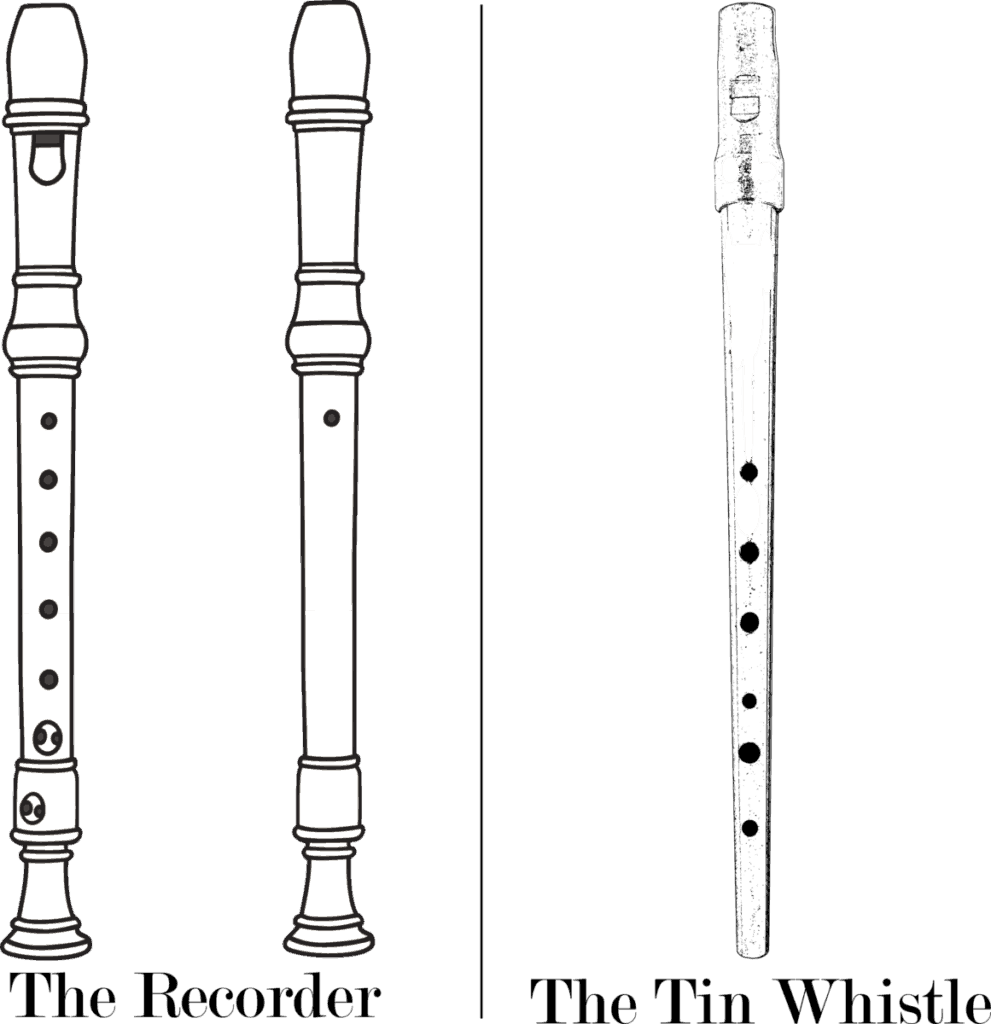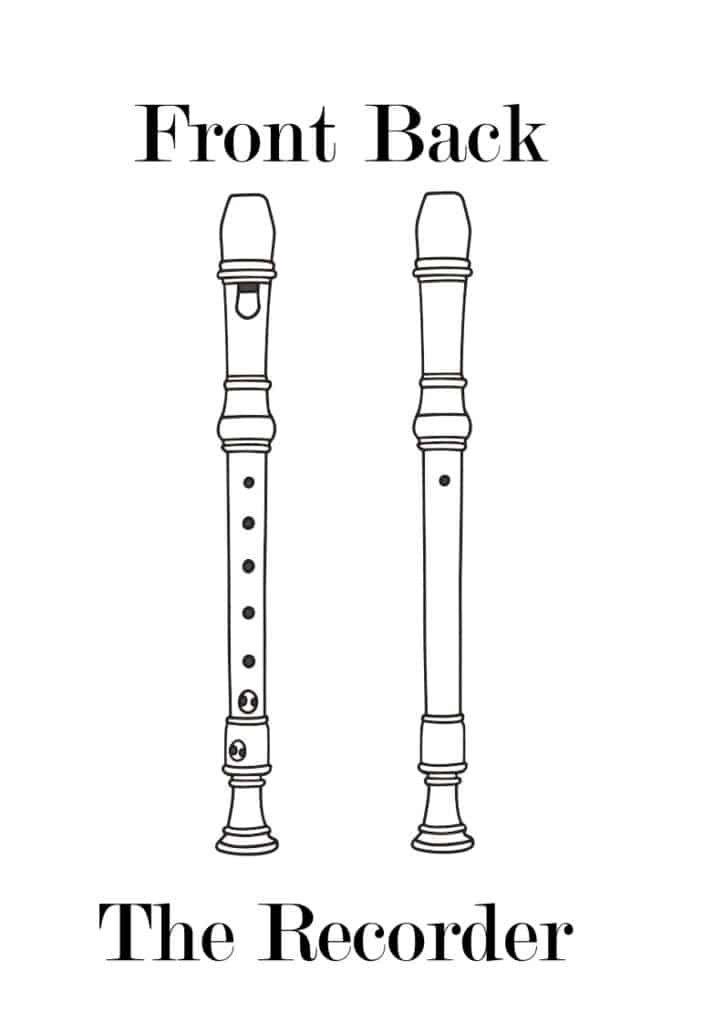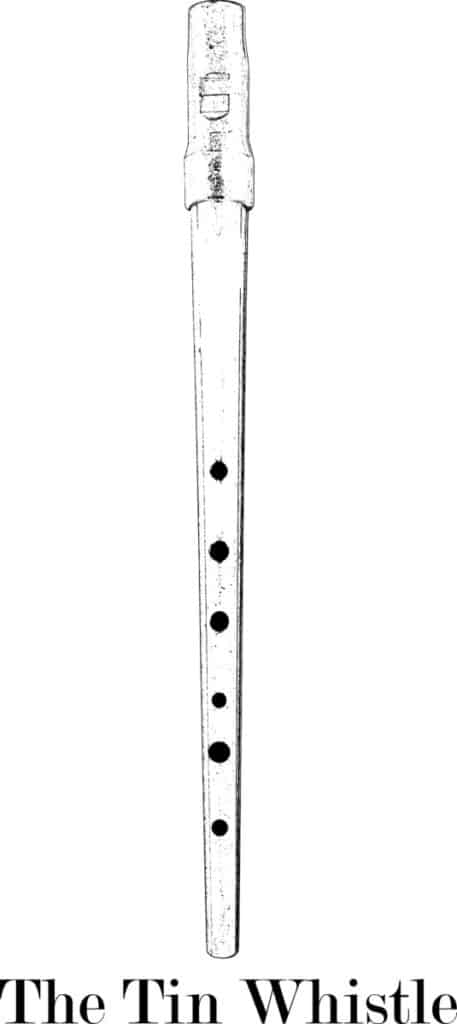This post contains affiliate links. We earn commissions if you purchase products from retailers after clicking on a link from our site. As an Amazon Associate, we earn from qualifying purchases.
Tin Whistles and Recorders… You might have heard about these instruments and after looking at a couple pictures you’ll notice that they look similar, but are they the same instruments?

By the way, looking for recording equipment and musical instruments? Check out Sweetwater.com for microphones, monitors, audio interface or any other recording gear that you could ever need. (Affiliate Link)
Tin Whistles and Recorders are both fipple flutes but are not the same instrument. Tin whistles are diatonic instruments (7 notes) while recorders are chromatic instruments (12 notes). The average tin whistle also typically has a softer sound than your average recorder.
Those are just the basic differences, but what does that all mean? Let’s dive in and see what the difference is and why you would want to choose one over the other.
Differences Between the Recorder and the Tin Whistle
Tin whistles and recorders look very similar, but there are some strong differences that are very important to understand if you are trying to pick between the two instruments. Both instruments are very inexpensive, with many recorders only costing around $5. Why would you choose one over the other? Let’s take a look.
Tin Whistle vs. Recorder Sound
The most important difference between tin whistles and recorders to me, personally, is the sound. A recorder has a bit more of brash sound, to me which I think is captured really well in this YouTube video that I made:
Technique makes a big difference here, you will get a much different sound from player to player, but in general, the recorder has a stronger sound, while the tin whistle sounds more earthy to me.
This all depends on the design of the instrument as well. Some recorders and tin whistles may be harder to distinguish if you were only able to listen and not see the instrument. In general, the tin whistle has a lighter tone in comparison to the recorder.
Tin Whistle vs. Recorder Construction and Appearance
Both the Tin Whistle and the Recorder share the much of the same design. Both of them are “fipple flutes.” A fipple is a name for the specific flute mouthpiece design where the air is blown in at the end of the instrument, rather than across the mouthpiece like the concert flute, or an empty glass bottle.
Fingering Count
The main differences in appearance is the number of fingerings (holes) in the flute. This particular recorder depicted has 7 holes in the front (technically 10, as the last two holes are actually two small holes right next to each other), while the back has one hole.

The Tin Whistle, however, typically has 6 holes, only on the front of the instrument.

Tin Whistle vs. Recorder Range
Another major difference between tin whistles and recorders are the number of notes that the instruments can play.
Both instruments are meant to be played within two octaves.
The recorder is a chromatic instrument, meaning it can play all 12 notes: C | D♭/C♯ | D | E♭/D♯ | E | F/G♭ | F♯ | G | A♭/G♯ | A | B♭/A♯ | B | C
The tin whistle is a diatonic instrument, meaning it can only play 7 notes, therefore they are limited to the notes of one scale. (Advanced players can play more notes by half covering holes, but the clarity of the notes is sacrificed and thus is only truly reserved for accidentals. To see more info about how to hit more notes on a Tin Whistle, check out our post here. ) This means that to play along with multiple songs in multiple keys, tin whistlers need to have multiple whistles.
The most common scales for a tin whistle are C and D.
General Appearance
From the tin whistles I’ve seen, the tin whistle seems to have a thinner body, while the recorder seems to have a body with a wider diameter.
Both the tin whistle and the recorder can be made of various materials, metal, wood, or plastic, but the tin whistle is most typically made of a metal. The most common recorders we see in classrooms are made completely out of plastic, but are not rarely seen made out of wood as well.
What Types of Music Do You Hear the Tin Whistle or the Recorder?
If you’re trying to decide between choosing a tin whistle or a recorder, one thing to think about is which types of music feature a tin whistle and which feature the recorder? This shouldn’t make your decision completely, since either can fit in many types of music.
Tin Whistle Genre
Since the tin whistle and the recorder are more common in different cultures, the types of music that you’ll find for a tin whistle are different than what you’d find for a recorder.
Tin whistles are often featured in Irish folk music, and sometimes Scottish folk music. By far, the tin whistle is most commonly heard in Irish music. The instrument is flexible, though and can fit in many contemporary songs if you alter the playing style.
Recorder Genre
Recorders have an ancient history and have been part of classical music for hundreds of years. Although the familiar “concert flute” has replaced the recorder in many orchestras due to its extended range and versatility, you will still hear the recorder in classical music to this day.
Many elementary school music classes feature the recorder. I’ve done some studying on this and there are various theories as to why this is. My guess of why this tradition continues is that the recorder is a well-known instrument (similar to the tin whistle) that is very easy to produce sound, but requires time and practice to make beautiful music (just like any serious instrument).
This makes it easy to teach kids the different notes because it requires little effort to go from “never-played-an-instrument-before” to “know-how-to-make-noise-with-a-recorder.”
What Famous Songs Feature The Tin Whistle or the Recorder?
Although the recorder and tin whistle are not typically chosen as featured instruments in modern-day music, you will still hear them occasionally. Here are a few examples that I found:
Famous Contemporary Songs on the Recorder
- Stairway to Heaven by Led Zeppelin features recorders during the intro in the studio version
- Gentle Giant often features the recorder in several pieces, including the song “Why Not?“
- The band “Yes” features a recorder in their song “I’ve Seen All the Good People“
Famous Contemporary Songs on the Tin Whistle
Wikipedia conveniently shares a couple examples of Tin Whistles in contemporary music
- Lord of the Rings made the Tin Whistle famous again with “Concerning Hobbits”, a compelling an moving piece that could be considered the theme song for the Shire.
- Titanic’s My Heart Will Go On
- The How to Train Your Dragon soundtrack has many tin whistle examples
